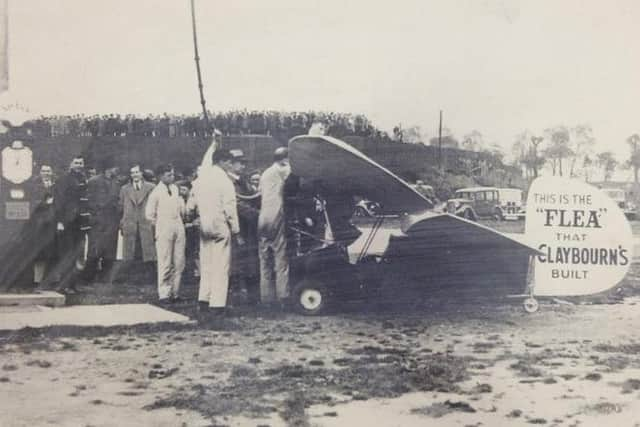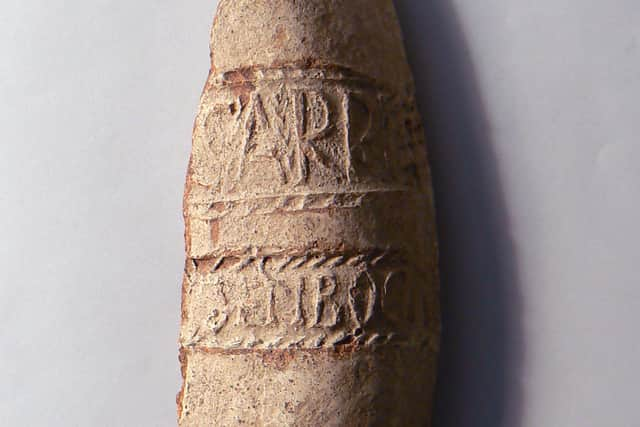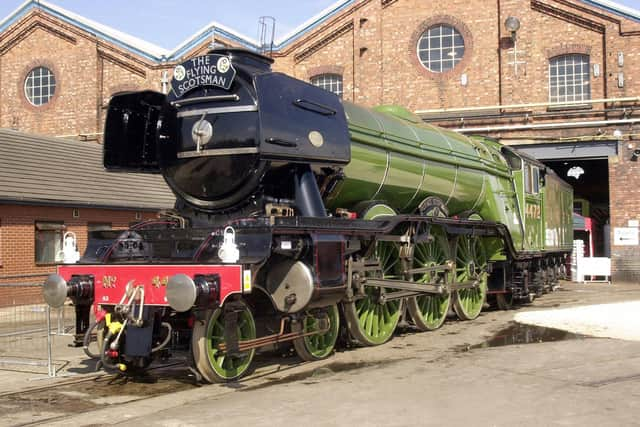Meet Doncaster’s Roman ‘Del Boy’ Sarrius and other amazing ancestors
and live on Freeview channel 276
But while you might think that the nation’s Industrial Age began with the Victorians, curators at Heritage Doncaster have been discovering that South Yorkshire has been home to extraordinary entrepreneurs for 2,000 years!
They’ve been exploring the region’s working life during new Wonder Clubs – ‘live action’ virtual social clubs open to everyone, which aim to bring people together by bringing the past to life.
Advertisement
Hide AdAdvertisement
Hide Ad“Sarrius the Potter is one of my favourite characters and we’ve dubbed him the Del Boy of Doncaster,” said Victoria Ryves from Heritage Doncaster, who’s organising the online social clubs as part of a pioneering project called History, Health & Happiness, supported by Arts Council England (ACE).


“A great opportunist, Sarrius moved to Doncaster to start up a pottery factory nearly 2,000 years ago, making his fortune selling to the Roman Army, but that was just the start of his incredible business empire.
"Pottery with Sarrius’s stamp has been found across Britain as far north as Glasgow. He also employed craftsmen from across the Roman Empire, including local tribesmen Secundua and Setibogius, and skilled potters from Gaul - modern-day France.”
Sarrius has become such a popular character with museum curators that they’ve made him the star of a new series of ‘5 Minute Histories’, bite-sized audio plays inspired by real-life Yorkshire people from the past, full of heart-warming drama and entertainment, and free for everyone to download online.
Advertisement
Hide AdAdvertisement
Hide AdPottery might sound like a humble beginning but fast forward a few centuries and a seismic shift was about to occur in Sarrius’ home-town of Doncaster.


In 1853, the Great Northern Railway relocated to the area and overnight the genteel market town became an engineering superpower.
In the years that followed, some of the most famous locomotives in the world were being built and designed in Doncaster, the town hosted one of the world’s first aviation meetings in 1909 and the first British fighter jets to be used in the Second World War, Gloster Meteors, were stationed at RAF Finningley, now a busy and expanding Robin Hood Airport.
Not surprisingly, the region soon became a veritable Dragon’s Den of entrepreneurs and innovators.
Advertisement
Hide AdAdvertisement
Hide AdThey included celebrated engineering genius Sir Nigel Gresley, who designed arguably the world’s most famous train, the Flying Scotsman, from the Doncaster Works. It was the first locomotive in the world to reach 100 mph.


Gresley went on to create a new class of streamlined locomotives, and in 1938, one of them, the Mallard, became a world record breaker when it reached a speed of 126mph. It’s a record the Mallard still holds today: the fastest steam locomotive on earth.
Both the Mallard and Flying Scotsman are now on display at the National Rail Museum in York as treasures of the realm, and Doncaster remains an important railway town to this day, chosen to be the site of the new National College for High Speed Rail.
Doncaster wasn’t just a magnet for world-class innovators. In October 1909, it also attracted the world’s best pilots when it hosted the UK’s first ever air show – including French, record-breaking celebrities Léon Delagrange and Roger Sommer, and Wild West showman Samuel Cody.
Advertisement
Hide AdAdvertisement
Hide AdFlying was in its infancy in the 1900s, and organisers knew it would attract the crowds, so it’s not surprising that other towns were also interested in being hosting such an international money-maker.
A dispute broke out with Blackpool, who accused Doncaster organisers of trying to overbid for flyers who were already contracted to the Blackpool races.
Doncaster won the day but, although tens of thousands flocked to Doncaster Racecourse to watch, success was muted due to terrible weather and heavy rainfall, with three of the pilots suspended from racing!
Doncaster’s entrepreneurs didn’t allow the rain to dampen their dreams, however.
Advertisement
Hide AdAdvertisement
Hide AdJust a few years later, South Yorkshire was playing a pivotal role in the First World War’s battle for the skies, training the world’s first fighter pilots and pioneering cutting-edge technology in a terrifying international arms ace against enemy ‘Baby Killers’ – the deadly Zeppelin airships.
Harold Blackburn, a local pilot who’d flown in the Doncaster Air Show, became one of Britain’s first-ever wartime pilots.
By 1915, Doncaster was acting as a local base for the newly-formed Royal Flying Corps (RFC, later to become the Royal Air Force), although this rapidly grew to five new airfields and a specialist factory.
In 1914, the RFC had 63 aircraft and 900 men; by 1918 this had rocketed to 22,000 aircraft, with over 122,000 men and women serving worldwide.
Advertisement
Hide AdAdvertisement
Hide AdToday, visitors can still see biplanes exhibited during Doncaster Airshow at the South Yorkshire Aircraft Museum, and one of the first of Doncaster’s wartime airfields, RAF Finningley, has become Britain’s newest international airport, Doncaster Sheffield Airport – connecting South Yorkshire’s people with the world.
If you want to enjoy more astonishing encounters with South Yorkshire’s entrepreneurs, pioneers and industrialists, then you can download free new activity packs designed to help you explore history at home, by visiting https://www.heritagedoncaster.org.uk/heritage-at-home/.
You can also download free 5 Minute Histories here, experiencing the world of Sarrius and other fascinating people from South Yorkshire’s past, and find out how to join new free Wonder Clubs, to explore South Yorkshire’s incredible history first-hand, in the company of the region’s friendly experts.
Victoria said: “The online social clubs, activity packs and 5 Minute Histories are just three of many imaginative initiatives thought up by curators at Heritage Doncaster over the past year, to help tackle loneliness and boost mental well-being across the region.
Advertisement
Hide AdAdvertisement
Hide Ad"Over the past few months, I think we’ve all experienced the impact of isolation on our mental health. It’s all too easy forget that, while many of us busy reuniting with family and friends and making plans to get out and about, a huge number of people are still isolated and alone at home.
"That’s why these activities are proving so useful - whatever your age, whatever’s happening in your life, this is a chance to escape into a hugely entertaining world of history, enjoying yourself while sharing a great big smile with some new friends.”
Take a mindful moment in time to boost your mental health: pause what you are doing. Make sure you are sat comfortably. Close your eyes and try to imagine the sights, sounds, smells and feelings of a journey you’ve taken in your life!
To get involved or to find out more, visit www.heritagedoncaster.org.uk or @DoncasterMuseum on social media.
Advertisement
Hide AdAdvertisement
Hide AdThank you to all who support local journalism with a digital or print subscription to The Star. The events of 2020 mean trusted, local journalism is more reliant than ever on your support. We couldn't do it without you. Subscribe here www.thestar.co.uk/subscriptions so we can keep campaigning on your behalf. Stay safe.